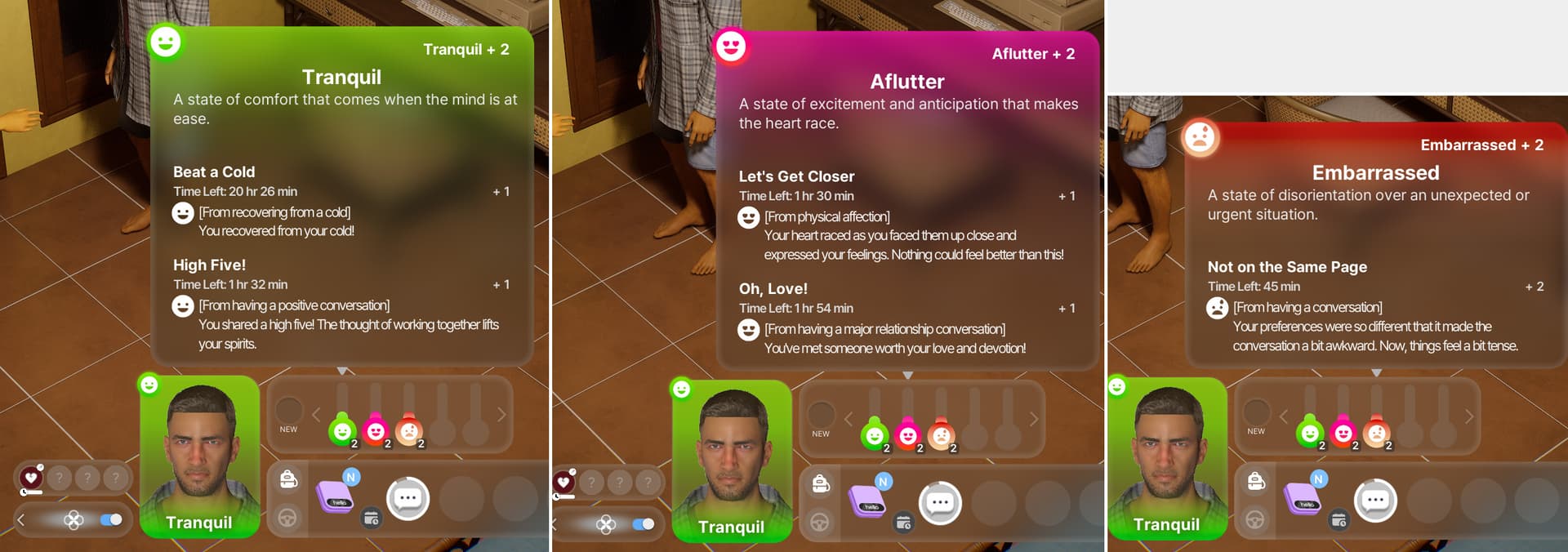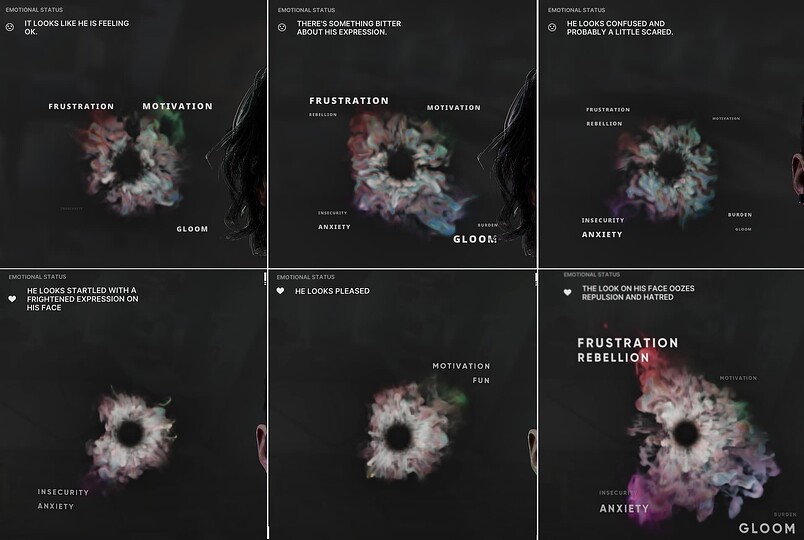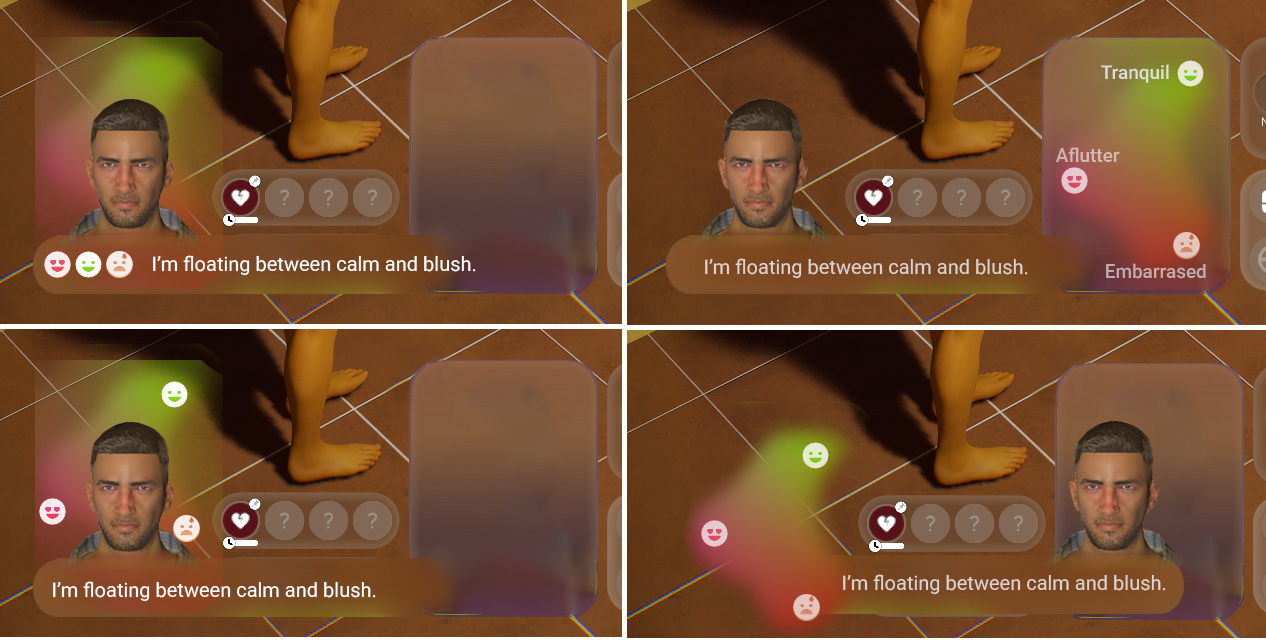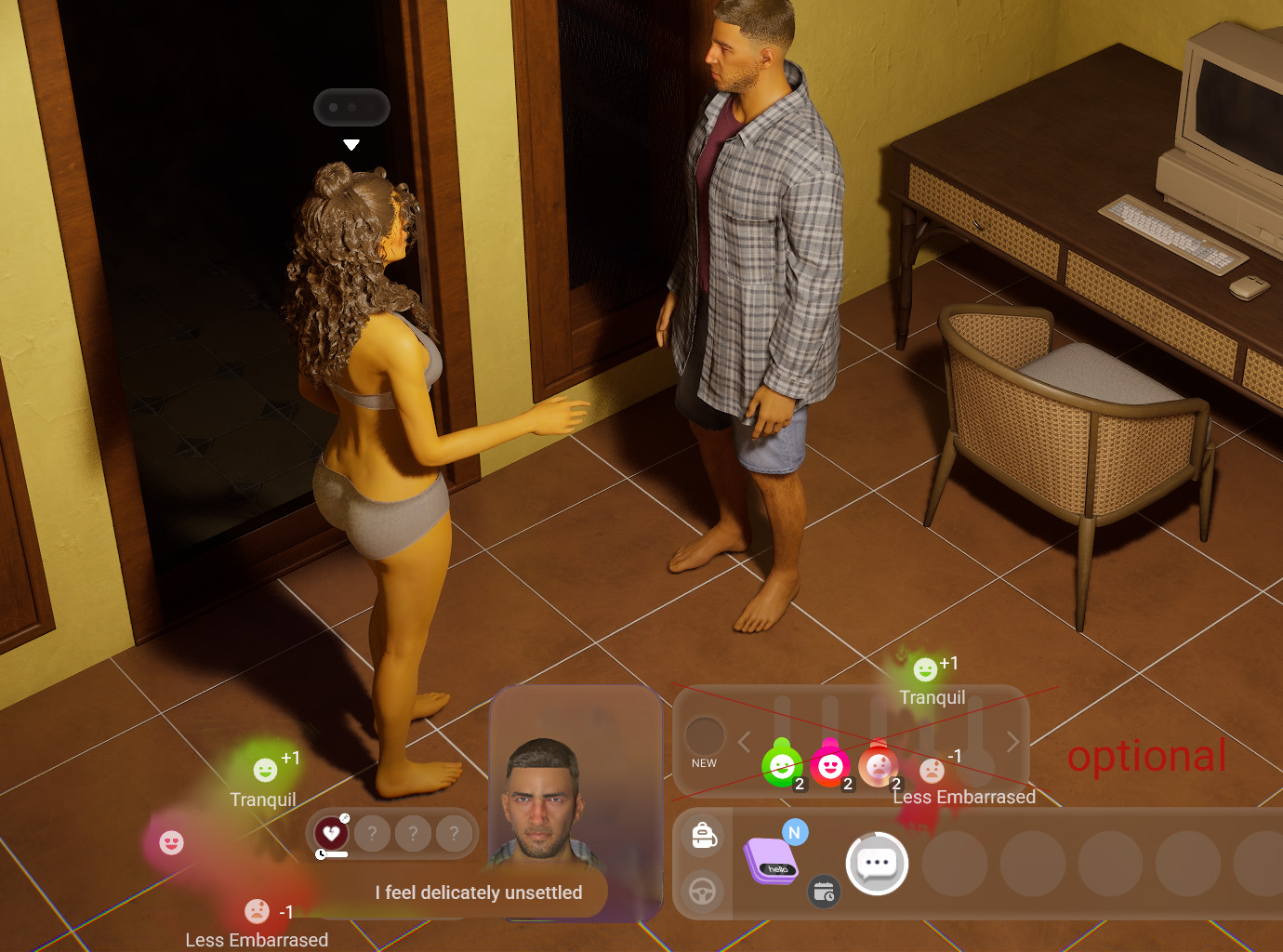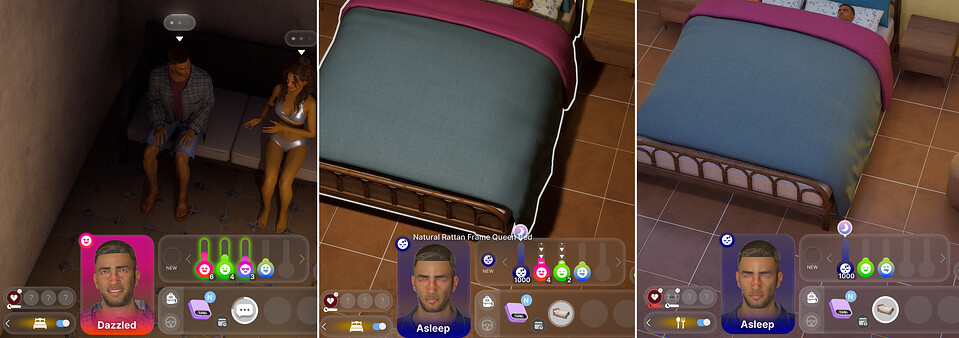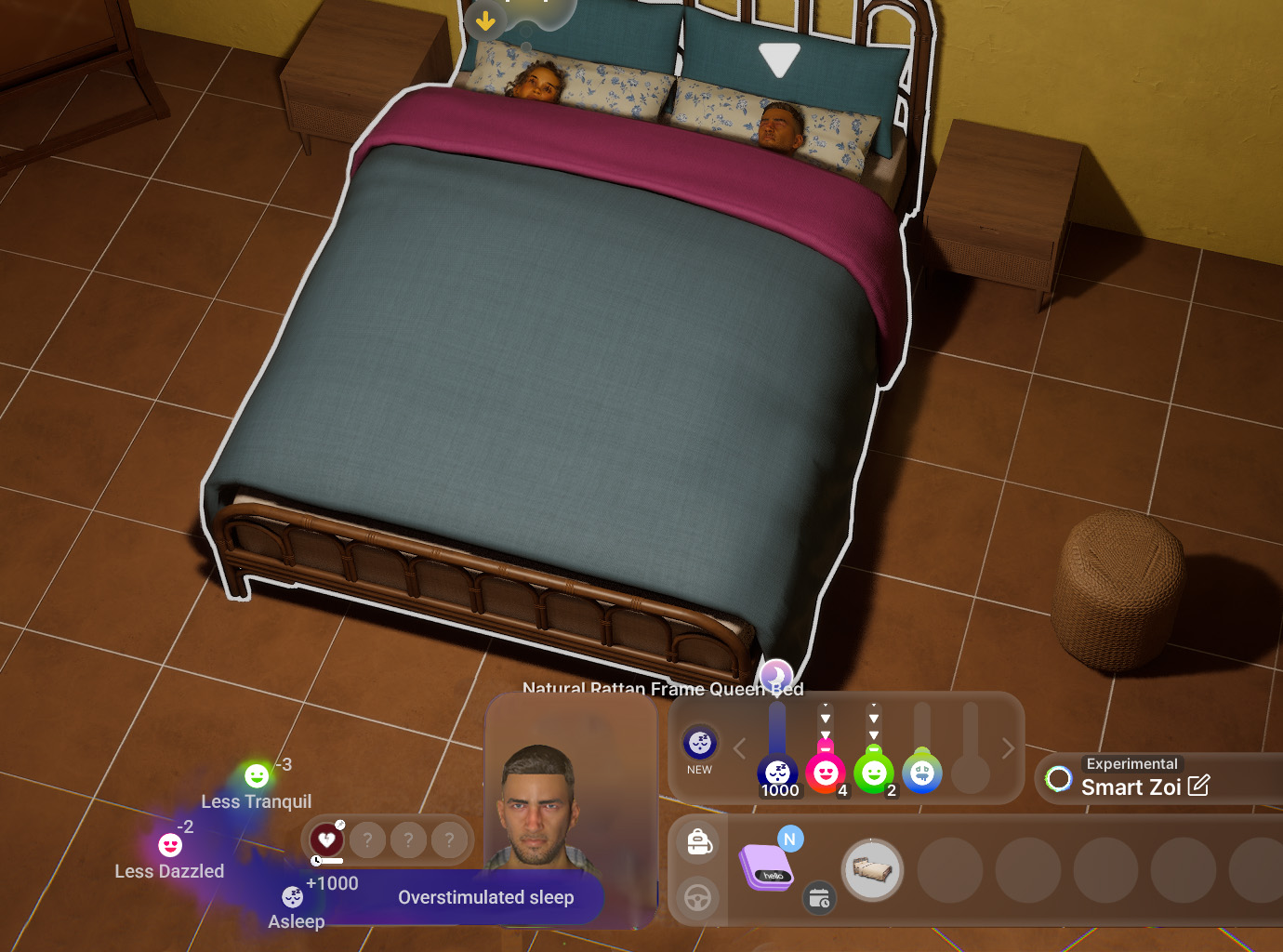![]() Why This Matters
Why This Matters
In the original TS4 model, which inZOI inherited, there’s only one core emotion at a time — it completely overrides the previous one. And that’s despite the fact that the TS4 model has been flawed from the very beginning: emotional swings are trivially triggered by minor environmental changes, making the system feel reactive rather than reflective, you’re just constantly hearing the sound of emotion change.
So… I’m tranquil +2, aflutter +2, embarrassed +2… but wait, why am I only tranquil if everything is equal? Isn’t there supposed to be a hybrid emotion or something in between?
And then, when The Alters released (June 2025), I couldn’t believe my eyes. A game that’s literally survival, nowhere near a life sim, presents an emotional state model so deep… The Alters doesn’t treat emotion as a status effect — it treats it as a layered system. You don’t “switch” from emotion 1 to emotion 2. You carry both, act through both and that duality becomes gameplay. These states coexist, conflict, and evolve; shape decisions, and even influence choices.
 Emotional Clouds and Multi-Emotion States
Emotional Clouds and Multi-Emotion States
Each of the presented examples contains an Emotional Cloud — a layered visualization of multiple emotions coexisting within the alter. These clouds are not isolated moodlets but dynamic blends, showing frustration, motivation, insecurity, anxiety… — each with its own weight and proportional presence. They form a composite emotional status that reflects how the alter feels across multiple dimensions at once.
This proportionality is key:
-
Frustration might dominate the cloud, but insecurity lingers beneath.
-
Motivation can coexist with anxiety, creating tension between drive and hesitation.
-
Rebellion may spike visually, but without suppressing the quieter undercurrents of doubt.
| Description Text | Dominant Emotions |
|---|---|
| IT LOOKS LIKE HE’S FEELING OK | Motivation, Frustration |
| THERE’S SOMETHING BITTER ABOUT HIS EXPRESSION | Gloom, Frustration |
| HE LOOKS CONFUSED AND PROBABLY A LITTLE SCARED | Anxiety, Insecurity |
| HE LOOKS SO STARTLED WITH A FRIGHTENED EXPRESSION ON HIS FACE | Anxiety, Insecurity |
| HE LOOKS PLEASED | Motivation, Fun |
| THE LOOK ON HIS FACE OOZES REPULSION AND HATRED | Frustration, Gloom, Rebellion |
 Emotion Duality and Conflict
Emotion Duality and Conflict
In dialogue scenarios, Alters can exhibit two simultaneous emotional states, forming Duality. This duality appears in three distinct patterns (++, + -, - -):
| Emotion Duality | Emotion Pairing | |
|---|---|---|
| Positive+Positive | Motivation (+), Joy (+) | |
| Positive + Less Negative | Motivation (+), Less Insecurity (–) | |
| Less Negative + Less Negative | Less Rebellion (-), Less Frustration (-) | |
| Positive + Negative | Motivation (+), Anxiety (–) | |
| Negative + Negative | Frustration (–), Gloom (–) |
At the same time, routine actions typically trigger a standard positive emotion or reduce a negative one (e.g., Movie Watching – Joy or Less Gloom, Beer Pong – Motivation). However, it’s worth noting that Alters in a suppressed state may still experience negative reactions.
 What can we do with emotions in inZOI?
What can we do with emotions in inZOI?
In the case of inZOI, there’s naturally a proprietary set of emotions, including both basic and amplified states. This allows for more individualized and layered emotional profiles, especially conflictual and borderline ones, which are incredibly common in real life, particularly in today’s world.
In the example above it would be helpful to also display a general emotional state derived from the overall cloud balance. This state represents the dominant mood context, even if multiple emotions are active.
In addition, during interactions, actions could be available for all active emotions in the cloud, not just the dominant one allowing the player to choose responses or behaviors aligned with any current emotional thread.
Of course, the graphics are very rough, but the Zoi icon takes up less space, and the emotion diagram resembles the original inZOI UI pre-v0.3, rather than Sims 4 copy-paste.
 Emotional Drift
Emotional Drift
(Inspired by Thought Cabinet from Disco Elysium)
Thought Cabinet is where internalized thoughts, often tied to emotions, persist and shape how the character interprets events, people, and choices. It turns feelings into lasting mental filters that influence dialogue and actions.
In inZOI, it can be seen as a short‑term emotional filter layer: it holds the dominant state from the emotional cloud and lets it bias perception and behavior for a limited time.
Examples:
Instead of fully overriding the emotional cloud with a fixed Asleep +1000 state, Zoi could retain a scaled influence of its dominant active emotion at the moment of falling asleep.
If Zoi falling Asleep while strongly Tense +5, that Tension might persist at low intensity within the cloud leading to restless sleep and a slightly irritable mood and interactions upon waking.
If Zoi falling Asleep while Happy +4, that Happiness persists in the emotional cloud at low intensity leading to calm, refreshed sleep and a mildly elevated mood upon waking, increasing cooperation and positive dialogue choices for a couple in‑game hours.
After critical Embarrassed +5 emotion, Zoi might subtly lean toward avoidant behavior for a few hours skipping social events or hesitating in conversations.
Before:
Initially, Zoi is Dazzled, Tranquil, and Confident. Once they fall Asleep, all emotions begin to decay (which is fine, keeping ~25% would make sense). But for some reason, they fully vanish over 5 min. Even Dazzled, which is a amplified emotion, seems to have zero influence on sleep. Why?
After:
During sleep, pre-sleep emotions slightly fade but still play a role. Despite Dazzled being suppressed, the sleep will still be Overstimulated (it’s fragmented or restless due to lingering sensory overload), and the emotion won’t disappear by morning — Zoi may wake up Aflutter, slightly disoriented or hyperactive.
